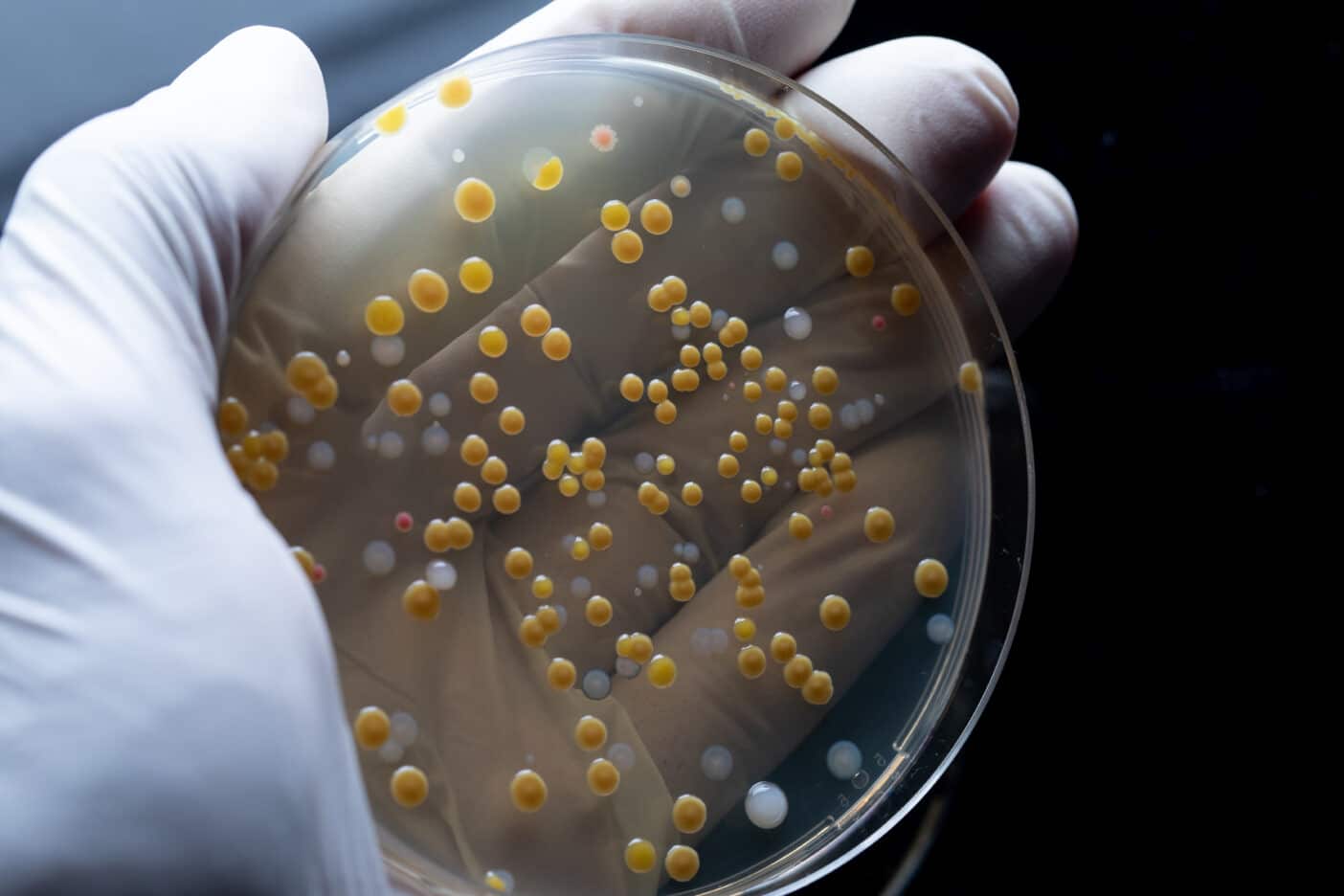Preservative systems

Water is the perfect basis of life for many organisms, but especially for microorganisms such as fungi, bacteria and yeasts. These multiply particularly easily and very quickly in water. If we then take a look at today’s cosmetic products, it is striking: Unless they are ointments or oils, they always contain water. However, this also means that microorganisms have an easy time of it, as they feel right at home in water. Unfortunately, the presence of fungi or bacteria in a product is often not immediately recognisable. Only when it is far too late, for example when the product smells unpleasant or mould has formed, does the consumer know that something is wrong with their cream or lotion. It is therefore important to take appropriate precautions when developing a product and to use good preservative systems. Manufacturers have various preservative systems at their disposal for this purpose. However, these do not only have advantages and are sometimes criticised. But how do the microorganisms get into the product in the first place? This happens automatically when the product is opened and then every time it is used again, and cannot be prevented.
Preservative systems for traditional and conventional cosmetics
Synthetic preservative systems fell into disrepute several years ago. They are suspected of causing intolerances and allergies. This applies in particular to formaldehyde, a synthetic substance that has been proven to be toxic. It is said to be carcinogenic and accelerates skin ageing. Formaldehyde has therefore been banned for use in cosmetic products throughout the EU since 2019. However, the so-called formaldehyde releasers, which appear on the INCI lists under various names, are still permitted. However, experts advise that these preservative systems should also be avoided in the interests of health. Another group of preservative systems includes parabens. They are used very frequently as they only trigger allergies relatively rarely. However, they have other disadvantages. Parabens have oestrogen-like properties and are therefore said to be able to influence the hormone balance. This in turn can have negative long-term effects on our organism. More and more scientists are now claiming that these preservative systems favour the development of breast cancer. However, there is still no reliable proof of this claim.
The so-called organohalogen compounds should also be treated with extreme caution. These preservatives comprise chemical compounds of chlorine, iodine, bromine and fluorine. They are also considered to be highly allergenic and in many cases carcinogenic.
The poor reputation of conventional preservative systems is often justified
To ensure the quality of a product and its safety for consumers, chemical preservatives have been added to personal care products for decades. Although these work very reliably, studies are piling up with reports of common preservatives causing skin irritation or allergic reactions. As a result, consumers are increasingly questioning the safety of preservatives or even rejecting their use in cosmetic products altogether. In order to replace the criticised classic preservatives, Cosmacon began years ago to increasingly look for solutions and alternative preservation strategies. This is because preservative systems such as parabens, formaldehyde releasers and organohalogen compounds really have no place in high-quality cosmetics. They have a harmful effect and numerous side effects. Other preservative systems listed in the Cosmetics Regulation, on the other hand, are considered relatively good, but are also clearly outdated. Alternative preservative systems often offer several effects, i.e. they are multifunctional active ingredients which, for example, fight microbes but also moisturise, mask or stabilise the skin.
Cosmacon offers its own modern preservatives
Cosmacon set itself the goal some time ago of working out and developing its own systems. These can now be used very safely and effectively. By dispensing with synthetic preservatives, we have been able to acquire extensive expertise over time. As a result – and thanks to our experience – we are able to implement the preservation of W/O emulsions and O/W emulsions just as reliably as the preservation of powdered products. For us, this is now routine and everyday business, which means that there are no delays in the development process. The preservation of natural cosmetics is a particular challenge for us. Compared to traditional cosmetics, the effort involved here is somewhat higher because natural substances often contain microbiologically active impurities. It is also an absolute no-go for us to sterilise natural substances and materials using gamma rays. However, all of our preservative systems are now very sophisticated, robust and well thought out. We are already able to offer fast-track developments of a maximum of just three months.
Water activity and its significance for microorganisms
One of the pillars of our expertise is the observation and reduction of water activity (aw).
Water activity is an important hurdle for the survival of microorganisms. The water content of a formulation, which indicates the total amount of water including the molecularly bound water, the aw value is a measure of the “free” water in a product. This unbound water is completely accessible to microorganisms and microorganisms can multiply very well in these regions of a cosmetic product. Reducing the availability of unbound water is therefore a top priority in the formulation of cosmetics. In combination with a low pH value, this is almost half the battle.
Our preservation strategy simultaneously strengthens the skin barrier and increases skin moisturisation
The reduction of water activity through the addition of a combination of sodium lactate, pentylene glycol, erythritol, betaine and sodium PCA leads to a significant improvement in microbial stability. In order to achieve a considerable reduction in potentially pathogenic germs, we combine these moisture retention factors with glyceryl caprylate and magnolia extract. In this way, we achieve barrier strengthening and can even reduce the hydrophilic emulsifier quantities.
Innovative preservative systems from Cosmacon
Good preservatives have no harmful side effects, i.e. they do not trigger allergies, are not carcinogenic and do not interfere with our hormone balance in the long term. At the same time, they also offer an optimal preservative effect. We at Cosmacon have developed our own innovative preservative systems that can be used both reliably and safely for a wide variety of cosmetic products.
Sources:
- Wilson, L.A.; Ahearn, D.G. Pseudomonas-Induced Corneal Ulcers Associated with Contaminated Eye Mascaras. Ophthalmol. 1977, 84, 112–119.
- Madani, T.A.; Alsaedi, S.; James, L.; Eldeek, B.S.; Jiman-Fatani, A.A.; Alawi, M.M.; Marwan, D.; Cudal, M.; Macapagal, M.; Bahlas, R.; et al. Serratia Marcescens-Contaminated Baby Shampoo Causing an Outbreak among Newborns at King Abdulaziz University Hospital, Jeddah, Saudi Arabia. Infect. 2011, 78, 16–19.
- de Groot, A.C.; White, I.R.; Flyvholm, M.-A.; Lensen, G.; Coenraads, P.-J. Formaldehyde-Releasers in Cosmetics: Relationship to Formaldehyde Contact Allergy. Contact Dermat. 2010, 62, 2–17.
- García-Gavín, J.; González-Vilas, D.; Fernández-Redondo, V.; Toribo, J. Allergic Contact Dermatitis in a Girl Due to Several Cosmetics Containing Diazolidinyl-Urea or Imidazolidinyl-Urea. Contact Dermat. 2010, 63, 49–50.
- https://cosphatec.com/stories/wasseraktivitaetsreduktion-zur-verbesserung-der-mikrobiellen-stabilitaet-und-staerkung-der-hautbarriere/
- Carvalho, R.; Maio, P.; Amaro, C.; Santos, R.; Cardoso, J. Hydrogel Allergic Contact Dermatitis and Imidazolidinyl Urea/Diazolidinyl Urea. Toxicol. 2011, 30, 331–332.
- Ballamwar, K.; Sahasrabuddhe, S.; Chafle, K. A Review: The Hurdle Technology- Self-Preservation Technology in Cosmetics. Sci. Res. Publ. (IJSRP)2020, 10, 820–827.
- Varvaresou, A.; Papageorgiou, S.; Tsirivas, E.; Protopapa, E.; Kintziou, H.; Kefala, V.; Demetzos, C. Self-Preserving Cosmetics. Cosmet. Sci. 2009, 31, 163–175.
- Leistner, L. Basic Aspects of Food Preservation by Hurdle Technology. Food Microbiol. 2000, 55, 181–186.
- Kerdudo, A.; Fontaine-Vive, F.; Dingas, A.; Faure, C.; Fernandez, X. Optimization of Cosmetic Preservation: Water Activity Reduction. Cosmet. Sci. 2015, 37, 31–40.
- Nadarzynski, A.; Scholz, J.; Schröder, M.S. Skin Barrier Enhancing Alternative Preservation Strategy of O/W Emulsions by Water Activity Reduction with Natural Multifunctional Ingredients. Cosmetics 2022, 9, 53.
